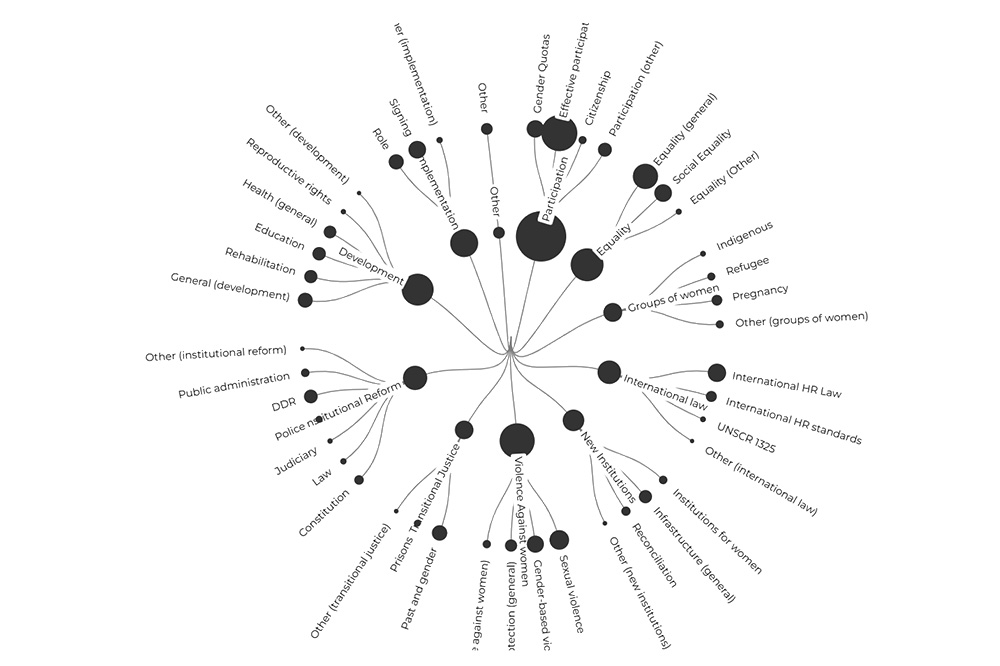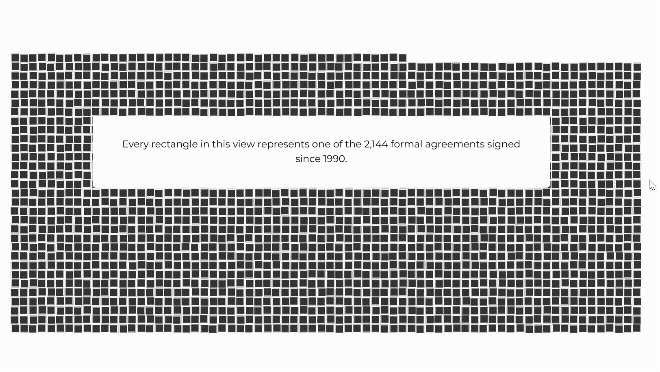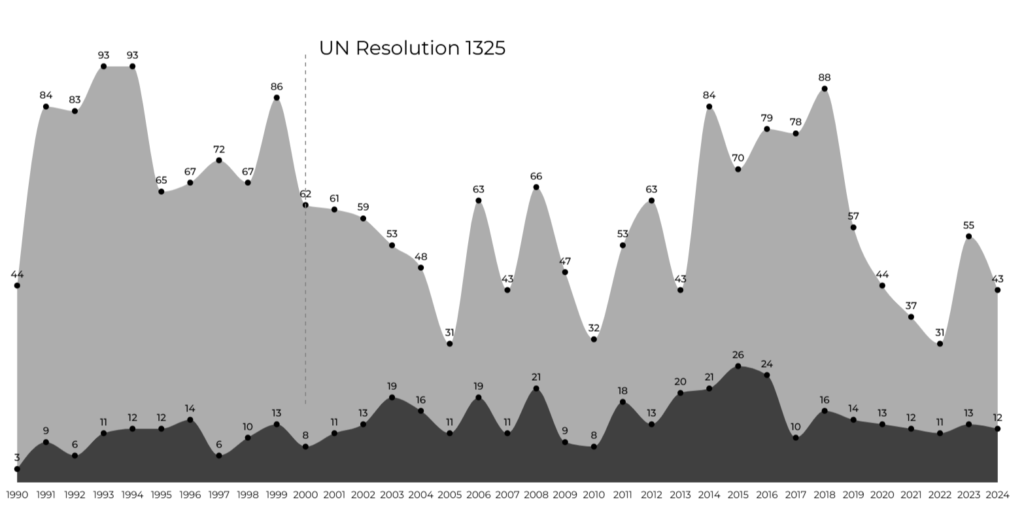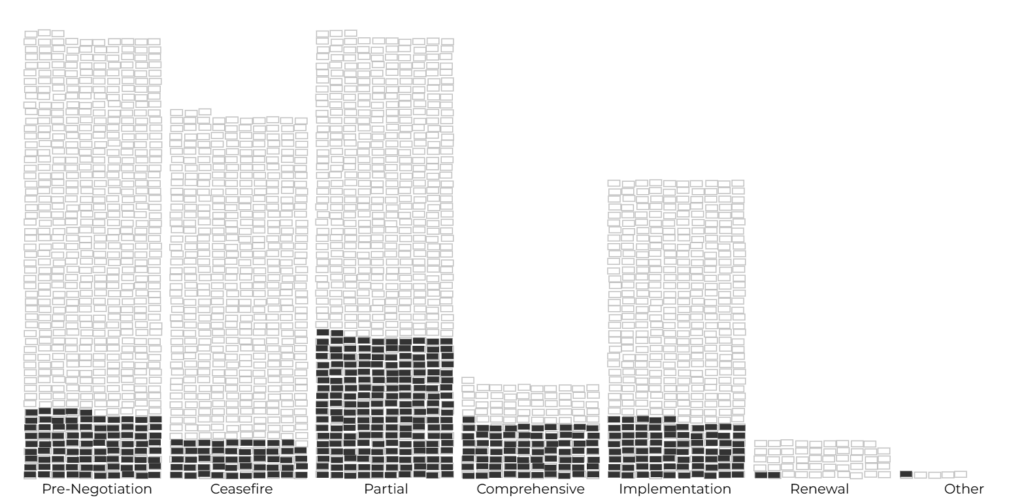As the 25th anniversary of the Women, Peace, and Security Agenda approaches, Alice Raymond and Laura Wise explore the data on women’s inclusion in peace agreements, sharing insights from PeaceRep’s new visualisation tool.
Despite uneven progress over the past 25 years, the data reveals key insights into inclusion in peace processes and helps identify gaps for future work.
Explore the new ‘scrollytelling’ tool: Women, Girls, and Gender in Peace Agreements

Visualising Women, Peace and Security through Peace Agreements
This year marks the 25th anniversary of the Women, Peace, and Security Agenda. When the UN Security Council adopted Resolution 1325 in 2000, it called on all actors involved in negotiating and implementing peace agreements to adopt a gender perspective. So, what does the data tell us about progress since then?
PeaceRep’s new ‘scrollytelling’ tool, ‘Women, Girls, and Gender in Peace Agreements’ offers original perspectives on how issues relating to women, girls and gender are addressed in peace agreements. The visualisation paints a sobering picture of inconsistent progress, but also hard-won gains by gender equality actors in peace processes.

[GIF: All peace agreements in PA-X (represented as black squares), followed by those that include a reference to women, girls or gender]
The new visualisation explores whether the signing of UNSCR 1325 has made any difference to the number of gender references included in agreements, how gender issues appear across the negotiation stages, and the topics addressed.
The data—sourced from the PA-X Peace Agreements Database—reveals some uneven progress. Between 1990 and 2000, 12% of peace agreements mentioned women, girls or gender. Since UNSCR 1325 was passed, 28% of peace agreements reached between 2000 and 2024 included gender references.
However, in recent years, as conflict has escalated globally, references to women, girls and gender have stayed relatively stable at between 20-30%. This percentage declines sharply if the high proportion of peace agreements from Colombia in 2023 and 2024 are excluded.

[Area chart showing number of peace agreements signed each year, with dark area showing those containing references to women, girls, and gender]
Contrary to perceptions that gender issues must wait until comprehensive stages of negotiations, the visualisation shows that gender references also appear during the pre-negotiation, ceasefire, and substantive-partial agreement stages, according to PA-X Gender data.

[Chart showing all PA-X agreements by stage, with those containing gender references highlighted in black]
Beyond these data insights, the existence of the data itself is powerful. Often overlooked in peacemaking, the Women, Girls, and Gender in Peace Agreements ‘scrollytelling’ tool highlights the contributions that gender equality advocates have made to peace processes, and supports monitoring of the implementation of the Women, Peace and Security agenda. Tools like these, of which PeaceRep has many, are helping policymakers, mediators and researchers make decisions based on evidence, track process, and identify gaps for future work.
It’s also important to remember that peace agreements do not tell the whole story of inclusion in peace processes. As we approach the anniversary of UNSCR 1325 on 31 October, women and their allies continue to work – both within and outside of formal peace processes – for women’s meaningful influence on peace process agendas and outcomes. This data commemorates those individuals’ efforts and hard-won victories and reminds us that there is much work left to do.
Explore the visualisation yourself: Women, Girls, and Gender in Peace Agreements
This visualisation was developed by Tomas Vancisin, Niamh Henry, and Laura Wise.